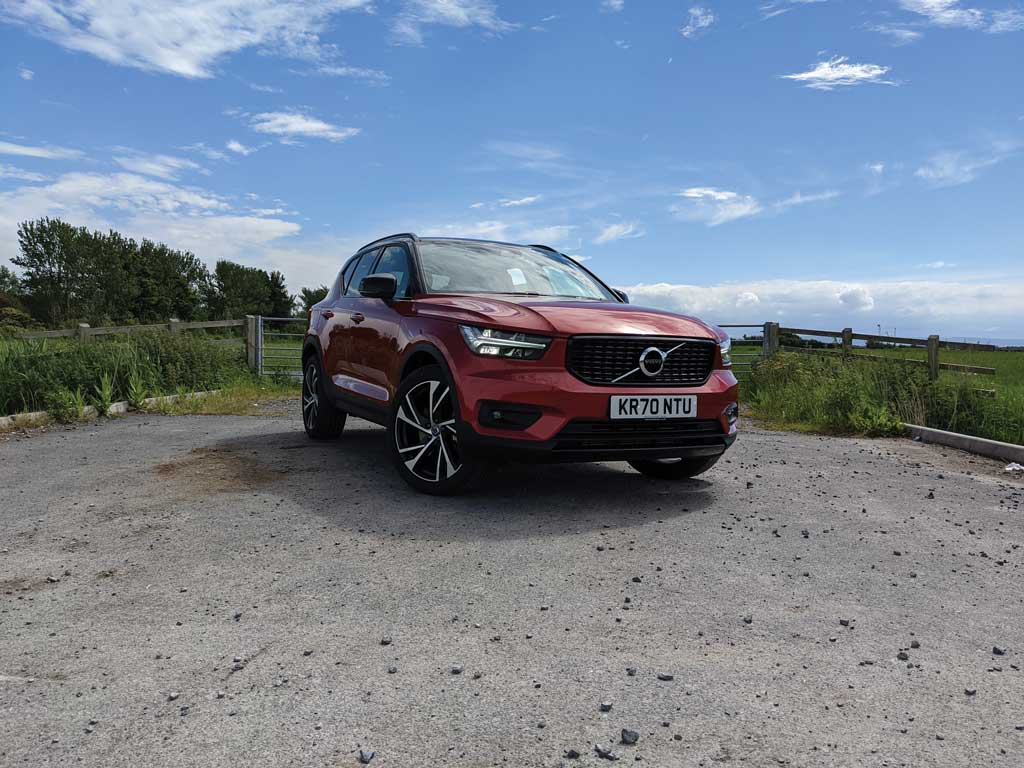
The whole point of these long-term tests is to find out what a car is like to live with. We try our best to get under the skin of a car – even when time is necessarily tight – and my colleagues that write the regular road tests have an enormous talent for doing exactly that, but it isn’t the same as living with a car day-to-day. Nothing quite compares to using a car all day and every day for months on end, just like the customers who buy them.
So it would be remiss of us not to try out one of the UK’s most popular new cars. The Volvo XC40 has become an instant hit for the Swedish premium brand, with more than 12,000 new examples already registered in 2021. That isn’t a great surprise, after some promising early interactions with Volvo’s smallest SUV.
We’ve already been impressed by the style, the ride and the classy Volvo interior, but now we’re finding out what it’s like to live with. Because they no longer sell diesel versions of the XC40, we have taken delivery of a T5 Recharge plug-in hybrid, resplendent in top-selling R-Design Pro trim.
That means we’ve got a few goodies to play with, but most of the features included over the standard Inscription Expression model are aesthetic. Despite the XC40 having a refreshingly un-sporty character, R-Design Pro gives you big alloy wheels, black exterior trim and stiffer suspension, as well as sporty seats.We’ve also got some slightly odd spotty dashboard inserts, black roof lining and smart contrast stitching and piping. It looks and feels great. I love the two-tone colour scheme that really makes the car, and while I’m normally a sucker for leather upholstery, the nubuck seats are lovely.
Climb into the driver’s seat and there’s a lovely clear 12.3-inch digital instrument cluster and Volvo’s portrait-orientated 9-inch touchscreen. It’s a very responsive system, but it doesn’t always look as modern as its surroundings and it can be a bit fiddly to use on the move. From there, you can control the car’s hybrid system and our car has an optional parking camera, as well as a graphic display for the front and rear g sensors.
Under the bonnet is a plug-in hybrid powertrain that combines a three-cylinder 1.5-litre petrol engine and an electric motor to provide 258bhp. That’s enough for a lively 7.3 second 0-62mph time, but the on-board battery still allows the car to cover a claimed 26.1 to 27.3 miles on electrical power alone.
It’s a shame there’s no four-wheel drive, which would be nice to have in an SUV that costs more than £40,000 – and especially one that likes to spin its front wheels even on a gentle throttle and in dry weather.
So far, though, economy is a bit of a hit-and-miss subject with the XC40. For a kick-off, it’s clear the electric range is a bit of a fantasy. I’ve managed about 20 miles or so from a single charge so far, but even that was pushing it a little bit. I might have done more without the air conditioning on, but the only thing worse than spending money on fuel is a sweaty T-shirt, so the climate control stays firmly on.
Still, over a range of roads, the XC40 has proven itself moderately economical using petrol. I haven’t been able to charge as much as I’d like (partly because I’m writing this rather than building the extension that will one day house our charging point), but it’s still doing more than 40mpg, and that isn’t bad for a petrol-powered SUV. Had it arrived with a three-pin charging cable, I suspect that figure would be higher.
So far, then, so good. The XC40 is settling in relatively well. I have a handful of minor complaints – mainly because this particular model is missing one or two things a supposedly premium model should have – but we’ll touch on those over the coming months. For now, it’s a stylish and practical way of getting around
Date arrived 1st April 2021
Mileage 2,360
CO2 emissions (WLTP) | 49g/km
Economy (WLTP combined) | 117.7-134.5mpg
Economy (On test) | 40.5mpg
© Motorworld Media 2023
Registered Office: 4 Capricorn Centre, Cranes Farm Road, Basildon, Essex. SS14 3JJ
Company Number: 8818356
Website designed by Steve Dawson